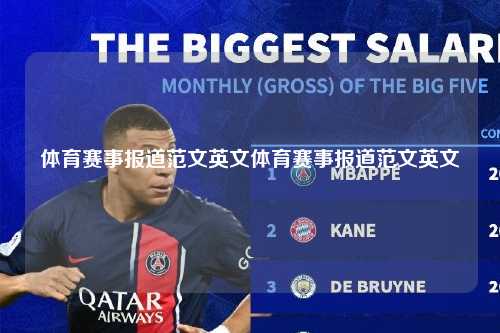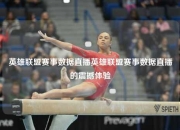In today's world, sports events not only serve as arenas where athletes showcase their talents and team spirit but also act as crucial platforms for global cultural exchange. This article aims to explore how one can write an excellent sports event report. By analyzing successful examples and practical techniques, it will help readers better understand and appreciate sports events.
"From the Field to the Screen: The Art and Technology of Sports Event Reporting"

I. Introduction
Sports event reporting is more than just news; it embodies a deep exploration of competitive spirit, teamwork, and human perseverance. A well-written sports event report can ignite viewer interest and spread positive energy, becoming essential components in media dissemination.
II. Choosing the Right Perspective
Before beginning any event coverage, understanding the background information is critical. This includes historical achievements, current standings, and pre-game conditions. Observing the audience reaction on the field provides valuable insights that might be highlighted in the report. Different audience groups have varying perspectives on the same event, which adds depth to the coverage.
III. Capturing Key Moments
Photographers play a pivotal role in capturing the essence of sports event reporting. They need keen observation skills to capture decisive moments, especially during goal celebrations in football matches. Proper lighting, angle selection, and composition should be considered to highlight significant occurrences.
IV. Analyzing Data and Technologies
With advancements in technology, data analysis has become integral to sports event reporting. Utilizing statistical software and big data tools allows for detailed analyses of various aspects such as player performance and tactical strategies. These insights enhance the professionalism of reports and allow readers to gain comprehensive knowledge of the match process.
V. Building Emotional Resonance
Sports events transcend mere competition; they reveal personal stories and challenges that resonate deeply with viewers. Sharing the journeys, struggles, and triumphs of participants fosters emotional connection and increased engagement from readers.
VI. Innovative Visual Techniques
Beyond textual descriptions, multimedia elements like video editing, slow-motion replays, and animation effects significantly enrich the content of sports event reports. Ingenious visual elements create immersive experiences, allowing viewers to feel fully immersed in the game environment.
VII. Interactive Feedback
Social media plays a vital role in sports event reporting. Authors can share real-time updates, host question-and-answer sessions, and gather reader comments and suggestions. Such engagement helps refine and tailor reports to meet contemporary demands and trends.
VIII. Conclusion and Outlook
A great sports event report must evolve dynamically over time. Continuous monitoring of developments and adjustments based on feedback ensure that reports remain relevant and effective. Emphasize dynamic storytelling techniques tailored to different audiences at each stage.
IX. Summary and Future Perspectives
Sports event reporting involves both creative challenge and rewarding achievement. Through this overview, aspiring journalists can obtain valuable guidance and inspiration. Whether traditional or digital media, focus on truly engaging every reader through authentic stories.
Sports event reporting is a dynamic endeavor requiring continuous effort to adapt to changing times and audience preferences. By applying these principles effectively, we aim to produce impactful, emotionally resonant reports that captivate and educate our audience.
版权声明
本文仅代表作者观点,不代表看个球立场。
本文系作者授权看个球发表,未经许可,不得转载。











